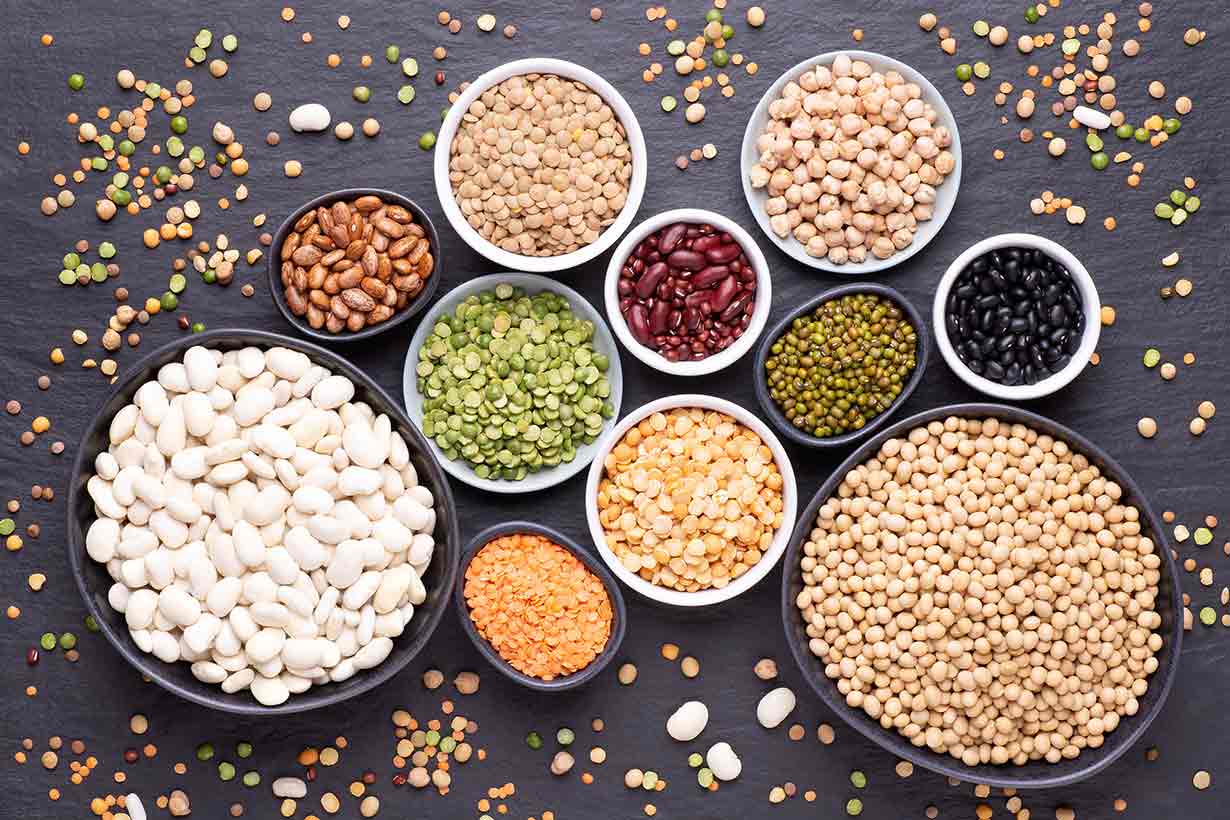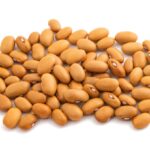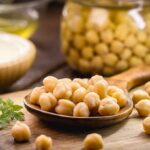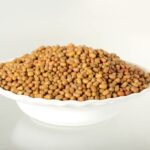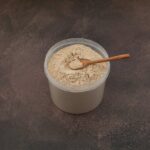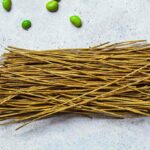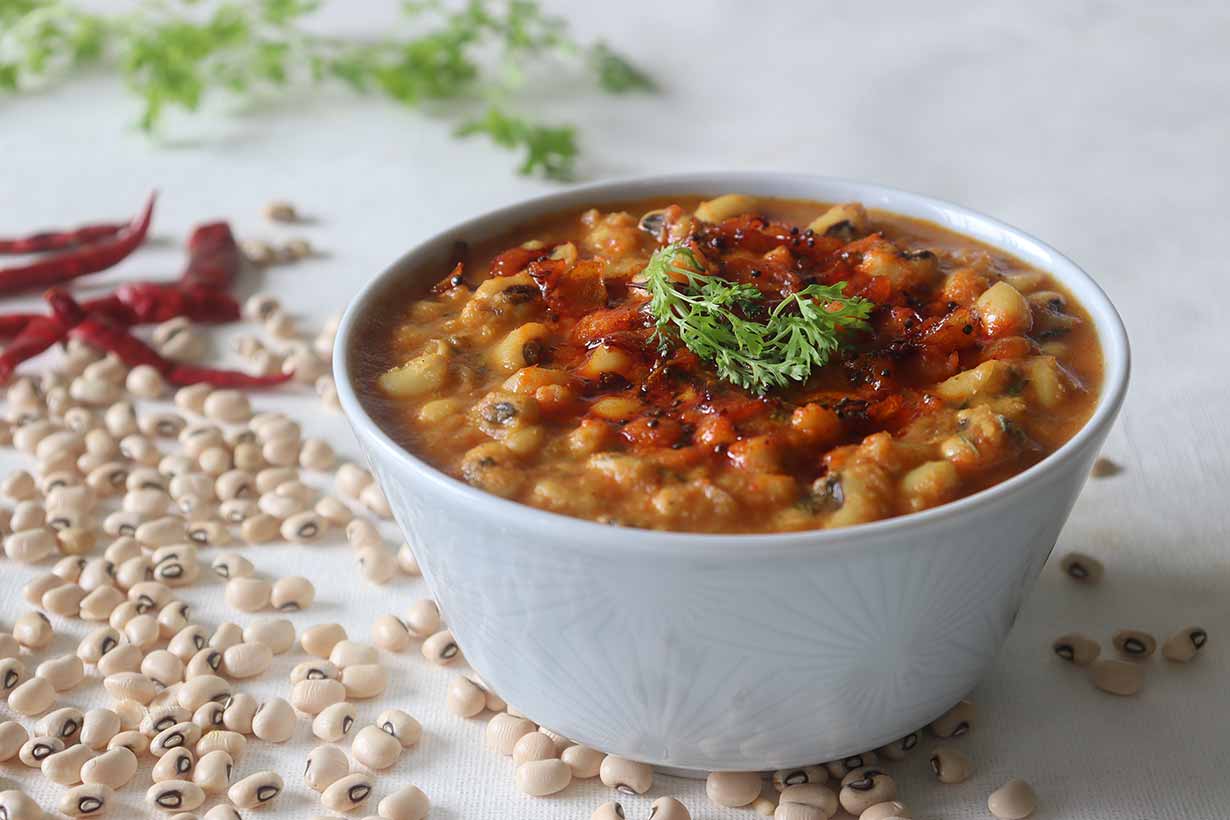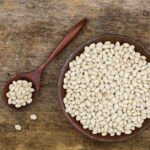The cannellini bean is a popular legume that offers a range of beneficial nutrients.
This article takes an in-depth look at the nutritional values and potential benefits of cannellini beans.
Table of contents
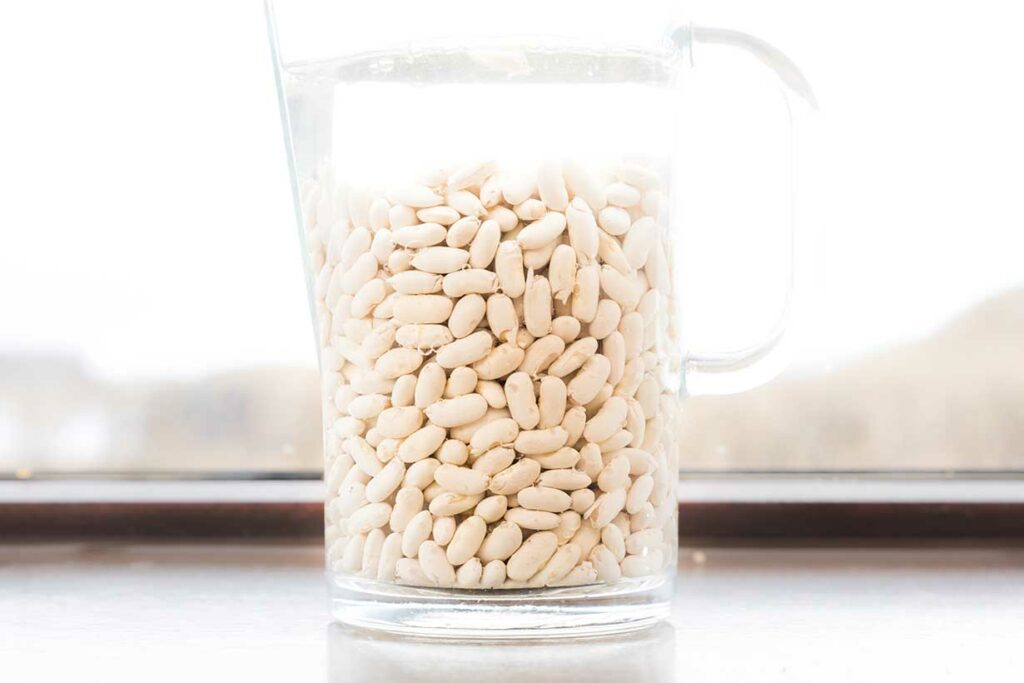
What Are Cannellini Beans?
Sometimes known as white kidney beans and pea beans, cannellini beans are a common white bean.
There are several similar forms of white beans that include lima beans, navy beans, and great northern beans. However, cannellini beans are much more prominent in size than these other white beans.
Cannellini beans grow on a species of plant known scientifically as Phaseolus vulgaris (1)
How Do They Taste?
Cannellini beans have a mild and slightly sweet, nutty flavor with a soft and tender texture once fully cooked.
Thanks to their mild texture, cannellini beans work well in a wide variety of dishes, and they absorb other flavors in the food.
Although there is still a notable difference, they have a flavor somewhat similar to a lima bean.
Their texture is soft and creamy like pinto beans and Anasazi beans.
Nutrition Facts
Using data from the USDA FoodData Central nutrition database, here are the nutritional values for dried cannellini beans per 100 gram/3.5 ounces (1).
All daily values are based on a standard 2000-calorie diet, and they have been calculated using USDA data and the FDA’s published daily values (2).
| Name | Amount | % Daily Value |
| Calories | 333 kcal | |
| Carbohydrates | 60.3g | 22% DV |
| Fiber | 15.2g | 54% DV |
| Sugars | 2.11g | |
| Fat | 0.85g | 1% DV |
| Saturated | 0.22g | 1% DV |
| Monounsaturated | 0.07g | |
| Polyunsaturated | 0.36g | |
| Omega-3 | 0.166g | |
| Omega-6 | 0.198g | |
| Protein | 23.4g | 47% DV |
Vitamins
- Folate: 97% of the daily value
- Thiamin (B1): 36% DV
- Vitamin B6: 19% DV
- Pantothenic acid (B5): 15% DV
- Choline: 12% DV
- Riboflavin (B2): 11% DV
- Vitamin K: 5% DV
- Niacin (B3): 3% DV
- Vitamin E: 1% DV
- Vitamin C: 0% DV
- Vitamin B12: 0% DV
- Vitamin A (RAE): 0% DV
As shown, cannellini beans are an excellent source of folate, and they provide a good amount of B vitamins.
Minerals
- Manganese: 78% DV
- Magnesium: 45% DV
- Potassium: 38% DV
- Zinc: 33% DV
- Phosphorus: 24% DV
- Selenium: 23% DV
- Calcium: 18% DV
- Iron: 13% DV
- Copper: 10% DV
- Sodium: 1% DV
Cannellini beans provide a broad range of minerals, and they are exceptionally high in manganese, magnesium, potassium, and zinc.
Benefits of Cannellini Beans
Here is an overview of some of cannellini beans’ benefits (and potential benefits).
A Rich Source of Fiber
Cannellini beans are among the most fiber-rich foods, providing 15.2 grams per 100 grams dried weight (1).
For those who prefer to buy precooked cannellini beans, they offer 6.7 grams of fiber per 100g/3.5 oz (3).
For more fiber-rich legume options, see this guide to lupin beans.
High In Protein
Legumes are among the best plant-based protein sources, and this is true of cannellini beans.
Based on their dried raw weight, 100 grams of cannellini beans supply 23.4 grams of protein (1).
In contrast, canned cannellini beans offer 4.4 grams of protein per 3.5 oz/100 grams (3).
Source of Resistant Starch
Starch is a type of carbohydrate found within foods. However, interestingly, not all starch is digested in the same way. In this regard, one type of starch known as ‘resistant starch’ is technically a form of fiber.
Resistant starch escapes digestion in the stomach and small intestine. Instead, it passes through to the bowel/colon, where it is fermented by gut bacteria (4).
Since resistant starch is digested by gut microbiota rather than the usual pathway of carbohydrate metabolism, there are some benefits (5, 6, 7):
- Resistant starch carbohydrates will not contribute the same amount of calories as regular starch/sugar/carbohydrates.
- It has a smaller impact on blood sugar levels.
- Gut bacteria ferment resistant starch to produce short-chain fatty acids.
Dried kidney beans and white beans like cannellini contain more than 20% resistant starch by weight (8).
Short-Chain Fatty Acid Production
Following on from how gut bacteria metabolize resistant starch, this process has some interesting metabolic products.
These metabolic products include butyrate and other short-chain fatty acids (SCFA).
Butyrate is crucial as it is a primary energy source for cells within the colon (9).
Additionally, butyrate is thought to be important for long-term colon health.
Numerous studies have suggested that butyrate may help to reduce inflammation and lower long-term colorectal cancer risk (10, 11, 12, 13, 14).
Potential Application In Baking
Cannellini beans don’t seem like something you would associate with baking.
However, studies have demonstrated that pureed white beans can be a suitable replacement for fat in baking.
In one study, 120 panelists rated different chocolate brownies for taste with ratings considering the flavor, texture, and tenderness (15).
One chocolate brownie used shortening as a fat source, and the others partially replaced the shortening with pureed cannellini beans. These three versions had 25%, 50%, and 75% of the shortening replaced by pureed cannellini bean.
Interestingly, the panel noted no significant difference between the regular brownie and the 25% and 50% pureed cannellini brownies.
Also, the brownies using pureed cannellini had fewer calories, less fat, and more fiber by weight.
Thus, replacing up to 50% of the fat in cakes/baking recipes with pureed cannellini may be a way to upgrade the nutritional properties of baked goods.
Cheap and Affordable
Like all legumes, another benefit of cannellini beans is their relative cheapness.
These white beans offer an excellent source of fiber, protein, and numerous vitamins and minerals for an affordable price.
For instance, a can of cannellini beans cost under $1, and they are even cheaper in their dried form.
Potential Side Effects
Like black-eyed peas and other beans, potential side effects of cannellini beans may include gas and bloating, especially if suddenly increasing dietary intake.
This is because cannellini beans contain indigestible carbohydrates that, as discussed, are fermented by gut bacteria.
Unfortunately, this fermentation process releases gases that can cause bloating and other digestive symptoms (16).
Whether one experiences these symptoms will depend on the individual and their total intake of cannellini beans (and other legumes).
How To Use Cannellini Beans
One of the main culinary benefits of cannellini beans is their mild flavor and soft texture.
As mentioned earlier, this makes them a versatile ingredient that can work in a broad range of recipes.
However, here is a quick summary of ways to use the beans:
- Add them to soups and stews
- Eat them plain
- Cover the cannellini beans in a favorite sauce for a quick and tasty snack
- Use them in curries
- Try using them in a brownie recipe (see the ‘potential application in baking’ benefit)
- Add them to a slow cooker alongside meat/tofu and vegetables
- Combine them with chickpeas to make hummus with something a bit different in flavor terms.
For some more ideas, here are 29 cannellini bean recipe ideas.
Common Questions About Cannellini Beans
Finally, here are some answers to common questions people often have about cannellini beans.
Firstly, cannellini and navy beans (and white beans as a whole) are all very similar. However, they are all unique beans with different tastes and slightly different nutritional profiles. One clearly visible difference between cannellini beans and navy beans is that the latter is smaller.
Canned cannellini beans have been precooked, so eating them straight from the can would be possible. However, cooking (or at least re-heating) them would probably taste a lot nicer than eating them cold.
Cannellini beans contain numerous nutrients, but they are very rich in fiber, protein, folate, manganese, magnesium, and potassium. Therefore, eating these beans would likely add a lot of important nutrients to the average diet.
The answer to whether dried or canned cannellini beans are better depends on the person and what they want. Once cooked, the difference (if any) in taste will be very small. That said, dried cannellini beans are much cheaper, whereas precooked and canned beans have the advantage of convenience.
Final Thoughts
Overall, there are lots of good reasons to consider using cannellini beans.
These large white legumes are full of nutrients, cheap, and they are versatile enough to work in a range of different dishes.
Cannellini beans can enhance nutrient-intake and work well in various recipes for those who enjoy their taste.

